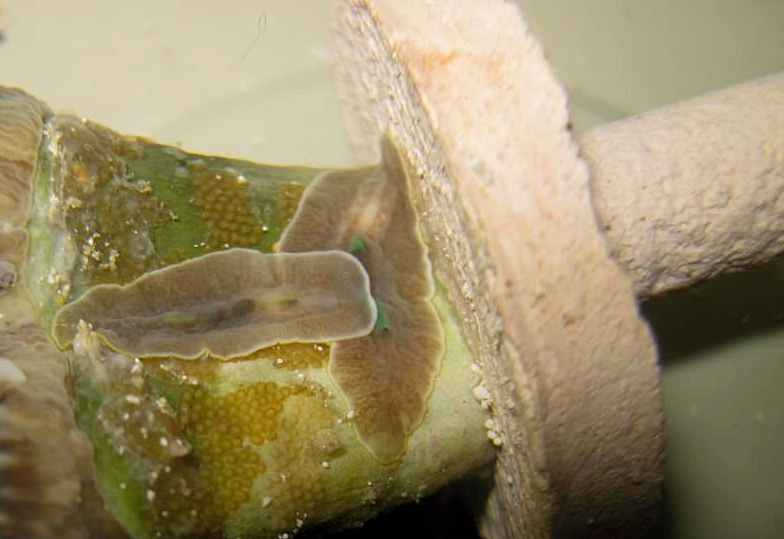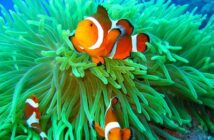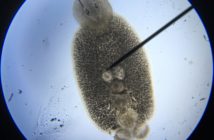
Polyclad worms are a type of flatworm that can wreck havoc on our prized corals. In this article we are going to take a look at a particular type of parasitic flatworm that some aquarists may be unfamiliar with.
The name “Polyclad” refers to its internal network of gastro-vesicular cavities (poly-clad) connected to its single mouth. These poly-clad cavities allow the worm to distribute food throughout their body as it is being consumed. They go unnoticed on corals because they often take on the appearance or color characteristics of the host coral, making them difficult to spot for the unsuspecting eye.
The order of Polyclad worms is divided into two sub-orders: cotylea and acotylea. The sub-orders differ by the presence of a suction organ.
Most of us are very familiar with AEFW (AKA acropora eating flat worms) and how big of a pain they can be on your wallet or pocketbook. But today we are going to discuss a less familiar species of parasitic flatworm which preys on specific to the family of corals, Euphylliidae.
Euphyllia eating flat worms (EEFW) are easy to spot once you know what to look for and finding them is not a problem if they are present in your aquarium. The best way to check for EEFW is to turn the coral head upside down and look at the base of the coral. Newly hatched flatworms are small in size but they can quickly grow up to 3 inches in length! Like many coral eating pests, these flat worms almost always lay their eggs below the living tissue of the coral along the skeletal base.
Euphyllia Coral Species:
ancora Veron & Pichon, 1980 – hammer coral
baliensis Turak, Devantier & Erdman, 2012 – bubble coral
cristata Chevalier, 1971 – grape coral
divisa Veron & Pichon, 1980 – frogspawn coral
glabrescens (Chamisso & Eysenhardt, 1821) – torch coral
paraancora Veron, 1990 – branching hammer coral
paradivisa Veron, 1990 – branching frogspawn coral
paraglabrescens Veron, 1990
yaeyamaensis (Shirai, 1980)
Treatment or Removal
Removing EEFW is really quite simple. One option for removal is by using a turkey baster. To perform this technique, remove the coral from the aquarium and place it in a container with aquarium water. Then simply blast the flat worms off the base of the coral with the baster until the worms loosen their grip and fall to the bottom of the container. Another technique for removal is to simply lift them off the base of the coral with a scalpel. Personally I prefer this method and it only takes a few minutes or less to eliminate all of the visible adults from the coral. After the adults are removed you will want to look for eggs. If you locate adult flatworms then you will probably find eggs attached to the coral skeleton. To remove the eggs, scrub the base of the coral with a toothbrush, being careful not to damage the coral tissue. Carefully scrub and rinse the eggs off with water in the container until all the eggs have been removed. A turkey baster can also be used to blast any remaining eggs from the base of the coral after they have been sufficiently scrubbed. If the coral is sizable and a branching species then it may be necessary to frag out the colony to get access to all of the nooks and crannies eggs could be hiding.
Another option is to dip the coral in one of the many available coral dips on the market. Dips can be effective at removing many aquarium pests but coral dips are typically only effective on adults while the eggs go unharmed. With that said, dips may not be as effective as simply removing them by mechanical means as described above. Additionally, coral dips can cause additional stress on an already stressed coral.
Mechanical removal may take several attempts before the worms are complete gone from the aquarium. Unfortunately, it only takes one worm or egg to make complete eradication unsuccessful on the first attempt. Polyclad worms are hermaphrodites and they can reproduce asexually by budding or division. To be sure no stragglers are left behind we recommend checking the corals weekly to make sure no new adults appear on the corals. If new adults are discovered then repeat the removal steps above until no more adults or eggs are observed. Good luck and happy reefing!





